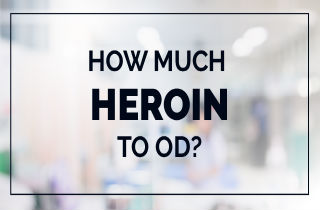Here, we review symptoms of heroin overdose, how cases of OD happen, their manifestations and the death rate related to heroin use. If you have any more questions after reading the article, please feel free to leave them at the end. We do our best to respond to each legitimate questions personally and promptly.
How does unintentional heroin overdose happen?
Most fatal cases of drug overdose in the U.S. result from drug poisoning. Drug poisoning occurs when a person’s exposure to a natural or man made substance has an undesirable effect, regardless of whether the substance is an illegal, prescription, or over-the-counter drug. However, poisoning can be classified as either suicide, homicide and unintentional.
Unintentional heroin poisoning, also known as “accidental overdose”, includes heroin overdoses resulting from the drug misuse, drug abuse, and taking too much of a drug while taking other drugs (for medical or recreational reasons). This can be brought about through nasal administration of heroin, injecting heroin, or mixing alcohol and heroin. For example, when you snort heroin, you deliver high doses of the narcotic opiate almost instantly to the bloodstream, and it crosses the blood-brain barrier. Breathing and heart rate can slow, leading to coma or death as a result.
Heroin overdose – How much is too much?
Because significant tolerance to respiratory depression develops quickly with continued use and is lost just as quickly during withdrawal, it is often difficult to determine whether a heroin lethal overdose was unintentional, suicide or homicide. Some sources quote the lethal dose, for an average 170lbs opiate-naive individual is between 75 and 375 mg, again depending on the route of administration. Depending on drug interactions and numerous other factors, death from overdose can take anywhere from several minutes to several hours.
However, illicit heroin, sold on the street under the names “junk”, “smack” or “skag” is of widely varying and unpredictable purity. The average purity of street heroin varies between 11% and 72% depending on the demographic region. On the other hand, heroin that has been seized at the border has purity levels many higher. This variation has led to users suffering from overdoses as a result of the heroin missing a stage on its journey from port to end user, where are added further adulterants and the strength of the drug reduces. This means that the user may prepare what they consider to be a moderate dose while actually taking far more than intended.
Additionally, tolerance typically decreases after a period of abstinence. If this occurs and the user takes a dose comparable to their previous use, the user may experience drug effects that are much greater than expected, potentially resulting in a dangerous overdose.
Heroin overdose complications
A heroin overdose has serious prompt and severe manifestations throughout the body and the vital organs. Here are the most common heroin overdose complications
Airways and lungs: slow, shallow and difficult breathing, or no breathing at all
Cardiovascular: heart and blood low blood pressure, weak pulse
Eyes, ears, nose and throat: dry mouth, pinpoint pupils, tongue discoloration
Nervous system: coma, delirium, disorientation, drowsiness, muscle spasticity
Skin: nails and lips turning blue
Stomach and intestines: constipation, spasms
Heroin overdose prognosis
Heroin is commonly injected into a vein and both of the ways to inject heroin come with different health risks related to sharing contaminated needles. Skin-popping more often results in abscesses, and direct injection more often leads to fatal overdose and also to hepatitis C and HIV infection.
Still, a heroin overdose is immediately reversible with an opoid antagonist injection and recovery normally occurs within 24 to 48 hours. Heroin is often mixed with other substances, which can cause additional symptoms and organ damage. In that case, hospitalization may be necessary.
Heroin overdose death rate
Nearly 9 out of 10 poisoning deaths are caused by drugs, out of which a few thousand cases per year are due to heroin overdose.
For a comparison, heroin was involved in about 3,000 deaths against the 15,000 opioid anaelgetics deaths.
Many fatalities reported as overdoses are probably caused by interactions with other depressant drugs like alcohol. Since heroin can cause nausea and vomiting, a significant number of deaths attributed to heroin overdose are caused because an unconscious victim is vomiting.
Let’s verify your coverage for treatment at an American Addiction Centers location. Your information is kept 100% confidential.
Heroin overdose amount questions
Do you still have some questions about heroin overdose? Please feel fre to ask your question or share your personal experience below. We will do our best in providing you with a personal and rapid response.









Related Posts